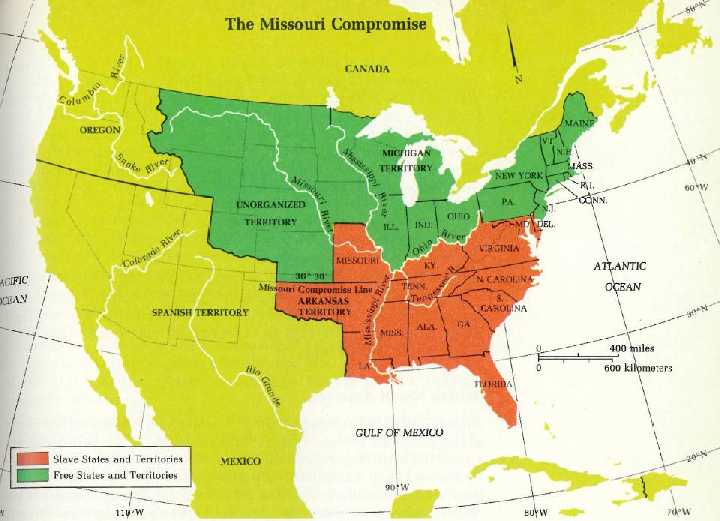|
Missouri Compromise
Looking Ahead
After the end of this section, you will be able to:
- identify the problem that led to the Missoury Compromise.
Toward the end of Monroe's first term in office a serious problem developed over the admission of new states. The problem arose not because of party rivalry but sectional rivalry. When the Constitution was adopted in 1789, there were seven free, or nonslave, states and six slave states. As new states entered the Union, a balance developed between slave and free states. By 1819, there were 11 free states and 11 slave states.
This balance was important because it kept equal the number of votes northern free states and southern slave states had in the Senate. The northern states, with their large populations, had many more votes in the House of Representatives. However, as long as the southern states could hold their equality in the Senate, they could keep antislave laws form being passed.
In 1818, Southerners faced a serious challenge. Missouri, part of the Louisiana Purchase, applied for statehood. It asked that slavery be allowed to continue within its borders. Northerners demanded that Missouri enter as a free state. At about the same time, Maine requested admission as a free state. Southerners said Maine could enter as a free state only if Missouri were allowed to enter as a slave state. This would keep the balance.
The question became a constitutional one. Northerners claimed that since Congress controlled the territories, it had the constitutional right to decide whether they should enter the Union as free or slave states. Southerners felt that each territory had a constitutional right to decide that question for itself.
A stormy debate followed. Mostly through the efforts of [E1] [E2] [F] [Es] [I]Henry Clay , an agreement was reached. Called the Missouri Compromise, it provided that Missouri would enter the Union as a slave state and Maine as a free state. For the time being, the slave-free balance was protected. But the problem would arise again. The Missouri Compromise said that any future state created from the Louisiana Purchase, north of the 36°30' line, would be free. As such, slavery was banned north of the southern boundary of Missouri. By the 1850s, many people would disagree with this solution.

Looking Back
- What problem led to the Missouri Compromise?
- How did it solve the problem?
- For which present-day states does the 36°30' line serve as a boundary?
 5/16
5/16

|